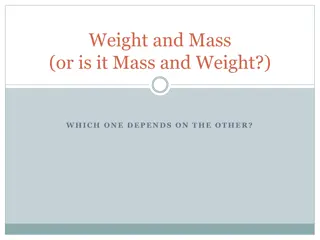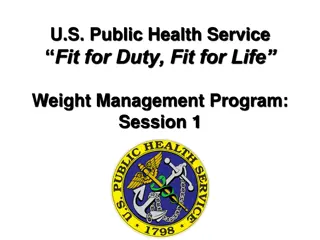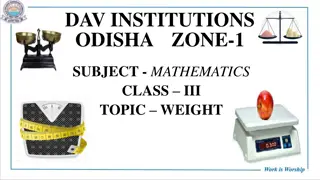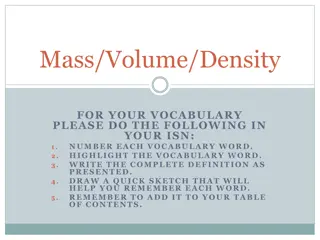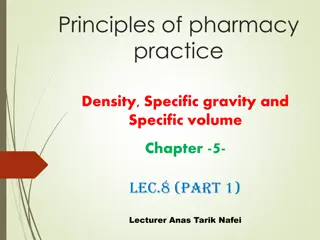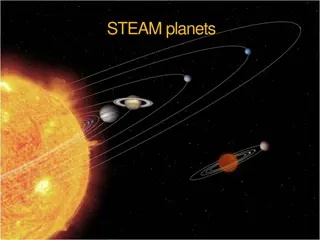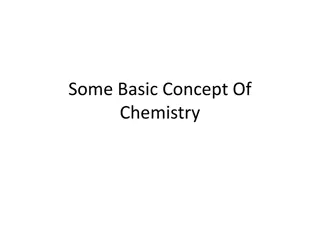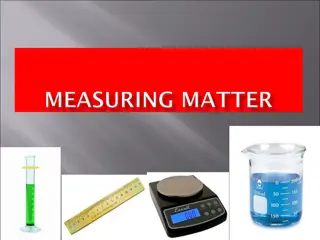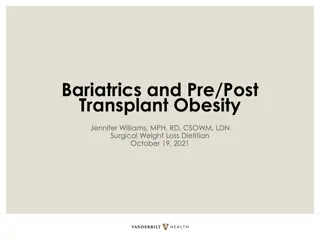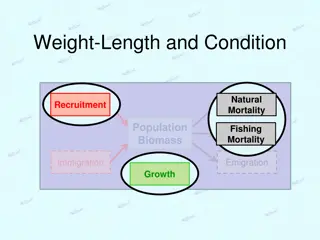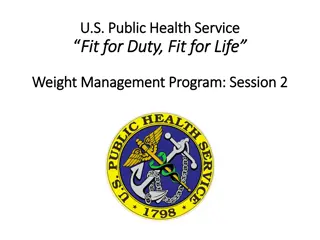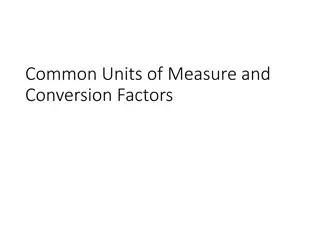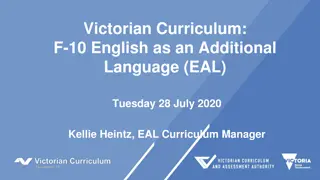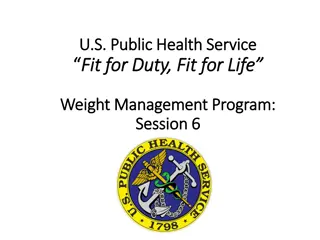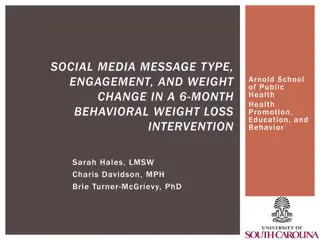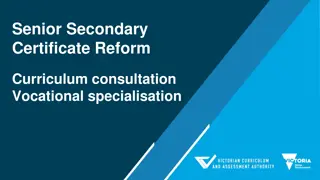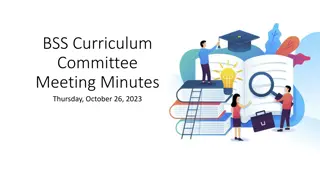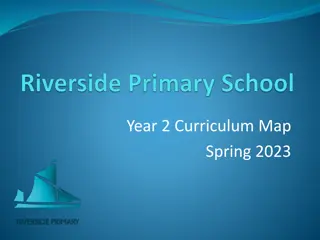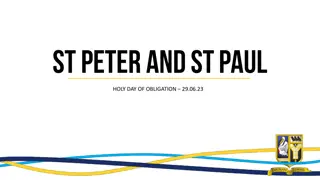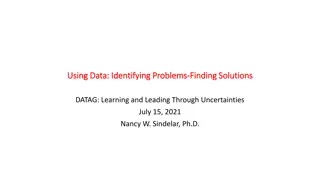Exploring Weight and Mass in Year 1 Science Curriculum
Dive into the concept of weight and mass in the Year 1 Spring Block 4 curriculum. Students compare, describe, and solve practical problems related to weight and mass using vocabulary like balance scales, heavier, lighter, and more. The content encourages engaging activities to measure and record mass/weight using non-standard units, fostering a hands-on learning approach for young learners.
Uploaded on Sep 13, 2024 | 0 Views
Download Presentation

Please find below an Image/Link to download the presentation.
The content on the website is provided AS IS for your information and personal use only. It may not be sold, licensed, or shared on other websites without obtaining consent from the author. Download presentation by click this link. If you encounter any issues during the download, it is possible that the publisher has removed the file from their server.
E N D
Presentation Transcript
Year 1 Spring Block 4 Weight and Volume Introduce weight and mass NCLO: To Compare, describe and solve practical problems for mass/weight: [for example, heavy/light, heavier than, lighter than].
Key vocabulary and questions Weight, mass, balance scales, comparing, heavier, lighter, the same, equal, stem sentence.
Year 1 Spring Block 4 Weight and Volume Measure mass NCLO: Measure and begin to record mass/weight.
Key vocabulary and questions non-standard units (e.g. cubes, bricks) ,weigh, compare, mass, weight, object, measure, balance scales, equals, same, heavier, lighter. When the scales are balanced, what does this mean? Can anyone think of any symbols we use in maths that are similar? If I add one more cube to this side, what will happen? How do you know? What if I take a cube away? What other objects could we use to weigh the mass of something? Which object do you predict will be heavier?
Year 1 Spring Block 4 Weight and Volume Compare mass NCLO: To Compare mass/weight: [for example, heavy/light, heavier than, lighter than].
Key vocabulary and questions non-standard units, weigh, objects and now focus compare, mass, balance scales, heavier, lighter, equal,< ,>. How many cubes weigh the same as _______? Which object is heavier? Which object is lighter? Which object do you predict will be heavier/lighter? Can we order the objects from heaviest to largest? Can I weigh this object with cubes and this object with bricks and order them? Explain why.
Reasoning and problem solving Extension
Year 1 Spring Block 4 Weight and Volume Introduce capacity NCLO: To Compare, describe and solve practical problems for capacity and volume [for example, full/empty, more than, less than, half, half full, quarter]
Key vocabulary and questions Capacity, containers, compare, full, empty, greater than ,less than, equal ,volume, stem sentence Look at my bottle, is it full? Is it empty? Compare my two bottles, which has more liquid in? Which has less? How can we show the container is nearly full or nearly empty? What s the same? What s different? If the container is different can we compare the volume easily? Why?
Year 1 Spring Block 4 Weight and Volume Measure capacity NCLO: To measure and begin to record capacity and volume.
Key vocabulary and questions Capacity, different, containers, non standard units, measure, same ,difference, volume, liquid How can we measure how much liquid will fill my container? What could I use? Can I start measuring the capacity with a spoon and then switch to a jug? Why not? How many bowls of liquid fill the bottle? How many cups of liquid are in the bottle? How is this different? How is this the same?
Year 1 Spring Block 4 Weight and Volume Compare Capacity NCLO: To compare, describe and solve practical problems for capacity and volume [for example, full/empty, more than, less than, half, half full, quarter].
Key vocabulary and questions Compare, capacity , different containers, non standard units of measure,more, less, equal, volume ,symbols <, > ,=. Which container has the largest/smallest capacity? Can we order them from largest to smallest? Which container has the most or least volume? Look at these two containers, can we compare them? Can we show A has more than B but less than C?


